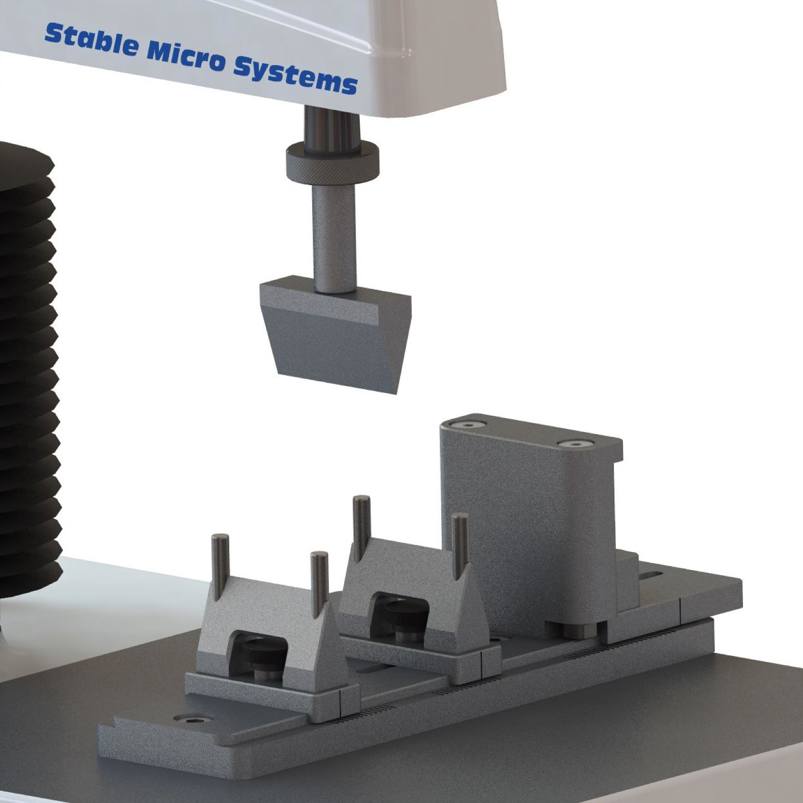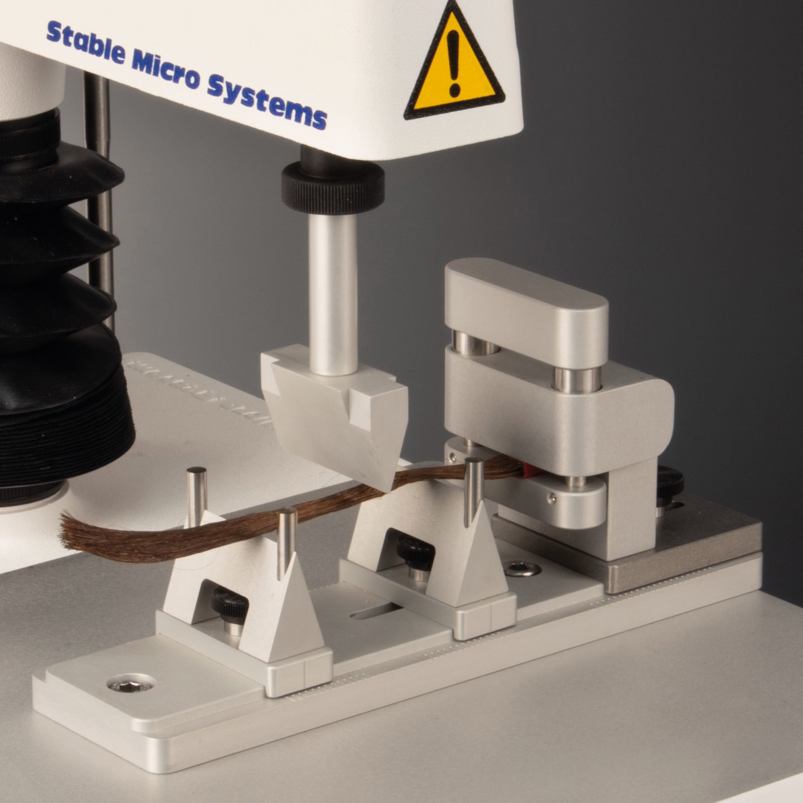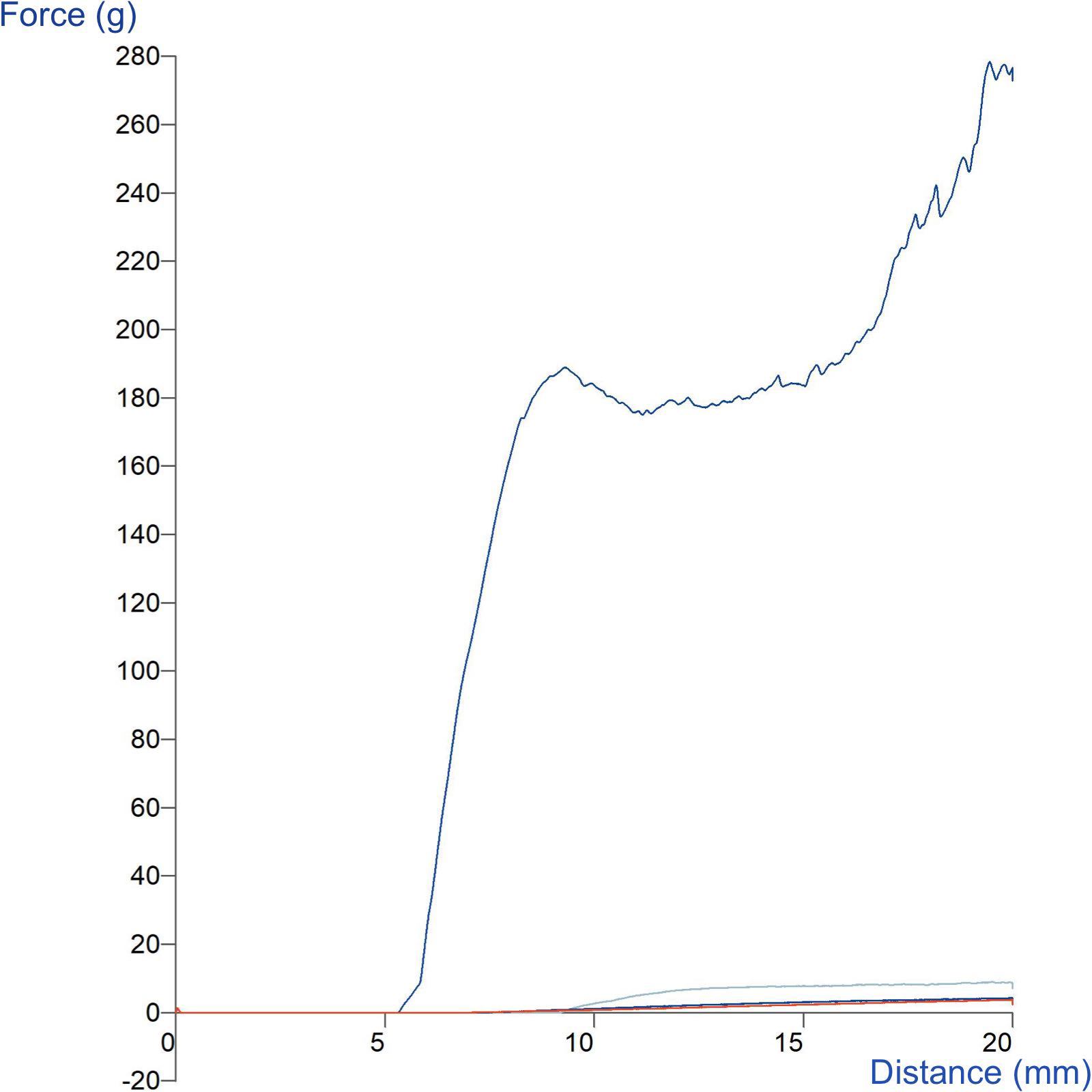Product overview
The bending force of a hair bundle can be used as an indicator of softness/stiffness. The effect of various hair treatments on softness can be determined by measuring the tress's bending properties before and after treatment. The hair bundle is clamped at one end and the remaining length placed on two supports. The Texture Analyser upper flexure unit descends vertically on the sample a set number of times, applying pressure to the central section of the hair bundle.
The stiffness of a hair fibre is increased when a polymer-based substance such as hairspray is applied. Hairspray formulations can be modified for a lower or higher stiffness by polymer cross-linking or introducing bulky side groups. To prove the holding power of fixatives, such as hair spray, the drop in bending force is calculated from the first to last cycle, as the polymer holding cast is broken after the first deformation.
For a treatment such as bleaching, a single bend cycle test may be used, or an average bending force from a cycle of ten three point bend tests is calculated for each sample. This is also applicable to measuring the efficacy of conditioner formulations containing new softening ingredients.
How does the Hair Stiffness Rig work?
Ideal sample form
Stiffened hair tress presenting as a 'bar' of material to be bent.
Benefits and limitations
- Limiting factor is the gripping force of the hair clamp and the maximum sample width
Technical information
Installation
Full installation instructions are provided within the Education Zone of the latest Exponent/Connect software version and on the technical information sheet accompanying this product.
Chemical compatibility
Stable Micro Systems probes and attachments are commonly made from four materials: anodised aluminium (AA6082 T6), stainless steel (316 T), Delrin (acetyl copolymer) and Perspex (polycarbonate).
In general use, probes and attachments made from these materials will be suitable for testing food products and inert non-food materials.
The four materials listed above are not universally resistant to all types of chemicals and as such the compatibility of the probe/attachment material with the product (to be tested) must be established to prevent damage to the probes and attachments. If the compatibility of the product with the probe is unknown to the customer then the chemical information about the product (Material Safety Data Sheet or Product Data Sheet) should be submitted to Stable Micro Systems. Stable Micro Systems will then assess the suitability of the probe/attachment material for use with the product and advise accordingly. If this advice is not sought then Stable Micro Systems will not accept liability for probes/attachments damaged by chemical attack from the product being tested.
Cleaning and maintenance
All probes and attachments may be cleaned in warm (or hand hot) water using a mild detergent. A soft brush may be used but abrasive cleaning aids should be avoided. Stable Micro Systems products should not be microwaved or cleaned in a dishwasher.
Screw threads should be lightly lubricated after drying using a light lubricant, e.g. petroleum jelly, mineral oil. This will aid the fitting and unscrewing of the item. Each component of a probe or attachment should be wrapped separately when stored, to avoid scratching or chipping. This will safeguard against any unnecessary damage to the accessory.



